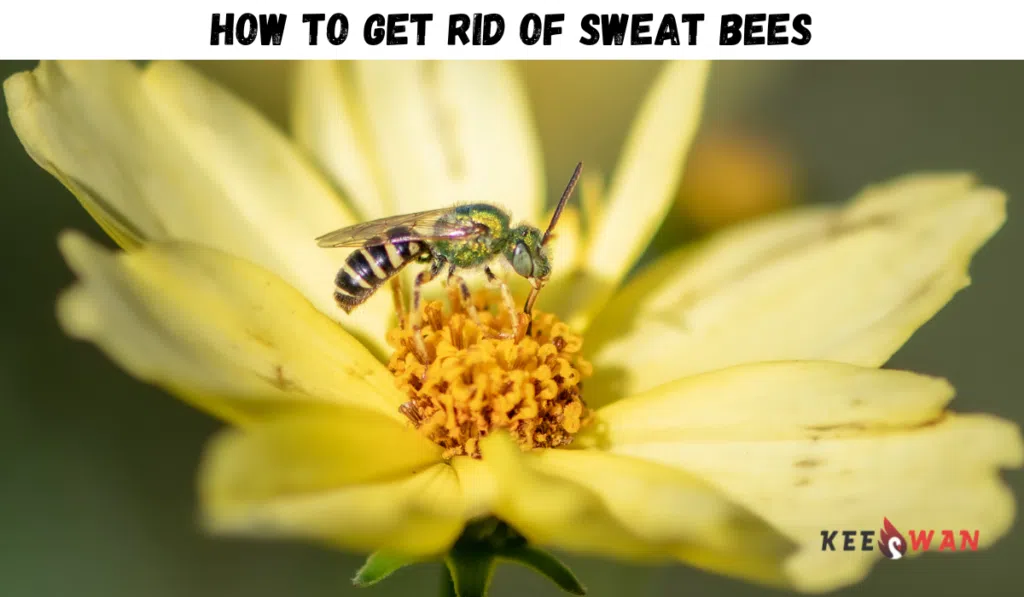Sweat bees, while generally harmless, can be a nuisance when they invade your personal space. These small bees are attracted to human sweat, seeking moisture and salt, making outdoor activities less enjoyable. Understanding how to get rid of sweat bees effectively and naturally can help you reclaim your outdoor spaces without causing harm to the environment or these pollinators. In this article, we’ll explore various methods to manage sweat bee populations and create a comfortable outdoor environment.
What Are Sweat Bees?
Sweat bees belong to the Halictidae family and are typically small, ranging from 4 to 8 millimeters in length. They come in various colors, including metallic green, black, and bronze. These bees are generally not aggressive and only sting if provoked. Their attraction to human sweat is what sets them apart from other bee species.
Why Sweat Bees Are Attracted to You
Sweat bees are drawn to the salt and moisture in sweat. During warmer months, they are more active, especially in areas where people are perspiring. Understanding this behavior is key to managing their presence effectively.
How to Get Rid of Sweat Bees Outside
Sweat bees are most commonly found outdoors, particularly in gardens, parks, and other areas with flowers and moisture. Here are some effective strategies:
-
Reduce Sweat Attraction:
-
Wear light-colored, loose-fitting clothing to minimize sweat.
-
Use unscented deodorants and soaps to avoid attracting them.
-
-
Create a Barrier:
-
Use fans in outdoor spaces. The breeze can deter sweat bees as they are weak fliers.
-
Set up screened gazebos or tents for sweat-free outdoor enjoyment.
-
-
Use Bee-Repellent Plants:
-
Incorporate plants that deter bees, such as eucalyptus, citronella, and mint, in your yard.
-
How to Get Rid of Sweat Bees Naturally
If you prefer eco-friendly methods, there are several natural ways to manage sweat bees:
-
Essential Oils:
-
Mix essential oils like peppermint, eucalyptus, or citronella with water to create a natural spray. Apply it to your skin or outdoor areas to keep sweat bees at bay.
-
-
Vinegar Traps:
-
Fill a small bowl with apple cider vinegar and a drop of dish soap. The scent attracts the bees, and the dish soap reduces the surface tension, trapping them.
-
-
Keep Hydrated Areas Clean:
-
Remove standing water from your yard. Sweat bees often hover near moist areas.
-
-
Maintain Your Yard:
-
Mow your lawn regularly and remove excessive vegetation to reduce their habitat.
-
How to Get Rid of Sweat Bees in Pool
Pools can attract sweat bees due to the combination of water and salt from human sweat. Here’s how to address this:
-
Use Pool Covers:
-
Cover your pool when not in use to prevent bees from accessing the water.
-
-
Set Up Water Alternatives:
-
Place shallow bowls of water with a pinch of salt away from the pool to redirect the bees.
-
-
Essential Oil Sprays:
-
Spray essential oils like peppermint around the pool area to deter sweat bees.
-
-
Install Bee Deterrents:
-
Use bee-repelling devices or citronella candles around the pool area.
-
How to Get Rid of Sweat Bees Outside Naturally
Combining natural methods with outdoor-specific strategies can be particularly effective:
-
Natural Bee Traps:
-
Create traps using empty bottles, sugary water, and a small funnel to capture sweat bees.
-
-
Plant Deterrents:
-
Grow bee-repellent plants like marigolds, basil, and rosemary around seating areas.
-
-
Eco-Friendly Yard Maintenance:
-
Avoid using chemical pesticides that can harm beneficial insects. Opt for organic alternatives instead.
-
-
Provide Alternate Water Sources:
-
Sweat bees need water. Placing a birdbath or shallow dish with salt water far from your activity areas can redirect them.
-
How to Get Rid of Sweat Bees in Yard
To enjoy your yard without the annoyance of sweat bees, follow these steps:
-
Identify Nesting Areas:
-
Sweat bees often nest in soil. Look for small holes in the ground and consider filling them with mulch or soil.
-
-
Use Mulch:
-
Cover bare patches of soil with mulch to discourage nesting.
-
-
Maintain Dry Conditions:
-
Water your garden early in the morning to allow the soil to dry by the afternoon, reducing its attractiveness to sweat bees.
-
-
Provide Shade:
-
Set up shaded areas to stay cool and sweat-free, reducing your appeal to sweat bees.
-
Tips to Avoid Sweat Bee Stings
While sweat bees are generally non-aggressive, these tips can help you avoid stings:
-
Stay Calm: If a sweat bee lands on you, remain calm and gently brush it away.
-
Avoid Bright Colors: Bright clothing can attract bees, so stick to neutral tones.
-
Avoid Fragrances: Strong scents from perfumes or lotions can draw sweat bees.
-
Use Protective Gear: If working in areas with high bee activity, wear gloves and long sleeves.
The Importance of Sweat Bees
Before attempting to eliminate sweat bees, it’s essential to recognize their role in the ecosystem. Sweat bees are pollinators, contributing to the health of plants and flowers. Strive to use non-lethal methods whenever possible to manage their presence.
Conclusion
Learning how to get rid of sweat bees involves a combination of preventative measures, natural deterrents, and thoughtful yard maintenance. Whether you’re dealing with sweat bees outside, in your pool, or in your yard, there are effective and eco-friendly solutions available. By implementing these strategies, you can enjoy your outdoor spaces without compromising the health of these vital pollinators.









